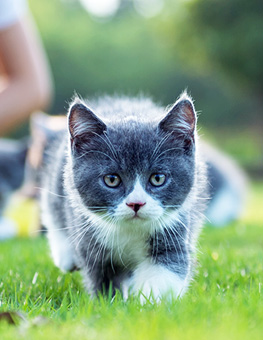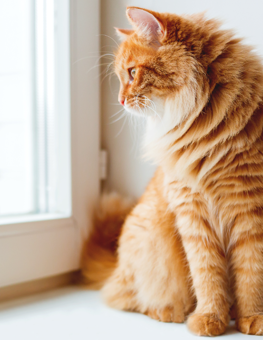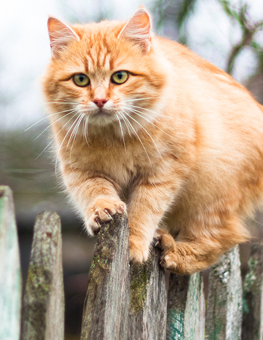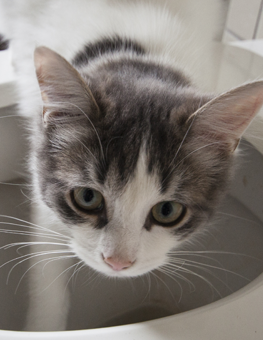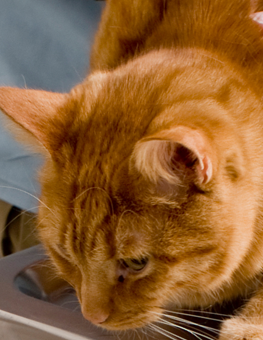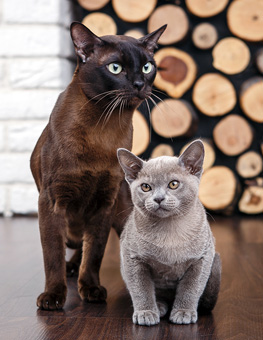Is it Cruel to Keep a Cat Indoors?
If you are a new cat owner, or if you are struggling with destructive or bothersome behavior from your indoor cat, you may be asking yourself, “Should I let my cat outside?”
In theory, outdoor exploration provides more enrichment, allows your cat to catch pesky mice, and helps alleviate boredom that can occur from staying indoors. While the idea of allowing your cat to explore the great outdoors may seem appealing, there are plenty of risks involved. Ultimately, no, it is not cruel to keep a cat indoors. In fact, keeping a cat indoors can be one of the best decisions for their health, safety, and overall well-being.
What are the Risks of Letting an Indoor Cat Outside?
- Wildlife Encounters. Your cat will certainly not be the only animal outside. They will likely encounter unleashed dogs, feral cats, raccoons, and, depending on where you live, even large predators like coyotes or foxes. Indoor cats stay protected from fights, injuries, and exposure to disease from these encounters with wildlife. Even your cat hunting his natural prey like mice and birds runs the risk of injuries, diseases, or parasites.
- Parasites. Outdoor cats are at a higher risk of encountering parasites like fleas, ticks, and worms. Even if you use Hartz’s flea and tick control products, the chances of your cat contracting these parasites are significantly higher outdoors. Keeping your cat indoors is the best way to minimize these health risks.
- Traffic Hazards. One of the biggest concerns for cat owners is the risk of their cat being hit by a vehicle. Roads, especially busy ones, pose a significant danger to wandering cats. Keeping your cat indoors eliminates the risk of traffic accidents. Whether or not you live on a busy road, accidents can and do happen.
- Getting lost. Even if you have the proper ID tags or a microchip, your cat may wander off and get picked up by animal control, which could prove to be a major hassle. Worse yet, if your cat doesn’t have proper identification, there may not be a way for animal shelters to get in contact with you.
- Reduced Lifespan. Studies have shown that indoor cats tend to live longer than cats who go outside. An indoor cat can live upwards of 20 years, whereas outdoor cats rarely make it into the double digits due to all the potential risks involved.
How to Let Your Cat Outside Without It Running Away
If you are still considering letting your indoor cat spend time outdoors, there are safe ways to do so:
- Supervised Outdoor Time. Accompany your cat outdoors and keep a close eye on them. Although this isn’t completely failsafe, in theory, you can prevent your cat from wandering off too far by sticking close by. This works best if you have a fenced-in yard.
- Leash Training. Yes, it’s possible to train your cat to wear a harness and walk on a leash. Although this plan isn’t for every cat, leash training can allow your cat to enjoy the outdoors while being prevented from running off.
- Outdoor Enclosures. Investing in a catio or outdoor enclosure can provide your cat with the best of both worlds. These structures provide a safe, contained environment where your cat can enjoy the outdoors without the risks associated with free roaming.
While the idea of letting an indoor cat outside may seem beneficial to allow your cat to get some exercise and extra mental stimulation, the risks of doing so outweigh the benefits. Keeping your cat indoors keeps them safe and protected. If you do choose to let your cat outside, taking precautions like supervised outdoor time, leash training, and using outdoor enclosures can help ensure their safety. It is not cruel to keep a cat indoors. In fact, it is generally the best choice for their health and longevity.



